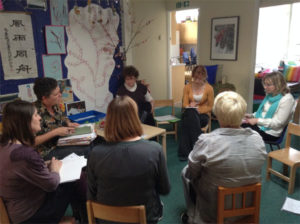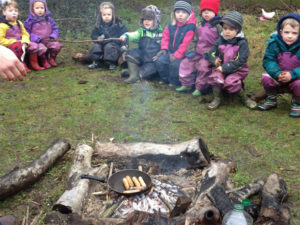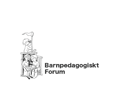In England preschools are usually termed ‘settings’ and are run by the state, private companies or voluntary bodies.There are also a number of registered ‘Childminders’ who provide education and care for children in their home. Most settings are private. Preschool teachers are normally called ‘practitioners’ in England and children attend primary school in the September after their fourth birthday. Preschool teachers from two settings participated in the pilot project and also a research seminar was held on 26 February 2014 with representatives from both preschools in addition to practitioners from other settings and academics and students interested in the project. [Note: Access to ‘public spaces’ in England and the UK. There is no publically owned space or land in the UK. All land and buildings is owned by someone, such as a business, council, charity and public access is by permission only.]

[Setting One – A Nursery School located in a housing estate in a large Town
(Children aged 2.5-4 years) An initial meeting with all staff (13) was held to preview questions and record images of potential sites for democratic engagement. Focus Group Discussion using images on 23 November 2013 was held with 6 practitioners and two students – the discussion was voice recorded.
Setting Two – A Private Outdoor Day Nursery in a rural setting near a city

(Children aged 6 months – 4 years) An initial meeting with staff (6) to preview questions and record images of potential sites for democratic engagement was held. This meeting was followed by a Focus Group Discussion using images on 9 December 2013 held with 2 senior practitioners, which was voice recorded. Cooking sausages in the nursery wood – January 2014.
For both Focus Group meetings discussion was under the following three questions: Re-conceptualizing public spaces as places for children: some questions… 1) What do we mean by public spaces? In the urban pre-school public spaces were defined as ‘local spaces used daily by the families and children’ such as:
- Pavement (or footpath)
- Park
- Local shopping centre
- Church
- Pub
- Library
- Doctor’s Surgery
- Open green spaces
- Woods
- Community Centre
There was also agreement that ‘public spaces can include buildings as well as open spaces’. In the rural setting one preschool teacher commented: ‘We tend to be outdoors and rural in this area. We tend to see children most often in indoor public spaces such as the local shopping centre. When we talk to most children about this there is a shared understanding – unlike with many other facilities’. In the rural preschool, teachers discussed ‘local village amenities’ such as:
- Recreation ground (park)
- Tithe Barn (not sure about access – village trying to buy it).
- Footpaths, bridleways, green lane and Roman road.
- Village hall (‘it needs to be hired and there are barriers for young children’)
- Churches/s graveyards
- Farmland museum
- The local Country Park (‘many children are familiar with this – it has a ‘Wild Place’ – a log cabin and Forest School on Saturdays. It includes a large woodland area and grassland. This is more accessible to parents, especially at weekends’.)
- Archeological Dig
[Note: Footpaths are ‘public rights of way’, bridleways are ‘public rights of way’ for walking, cycling and horse-riding and green lanes are traditional ‘old’ roads through the country normally with a natural surface]. The preschool teachers also defined significant public spaces in the nearest town or city, such as:
- A large shopping centre (usually indoor)
- A Market Square
In the town where the urban preschool is located the Market Square was converted to a ‘beach’ for one week during August 2013.
- Park
- Library
- Town Hall
- Museum
- Country Park
- Botanic Gardens
2) Which public spaces would you want to use with children? In the urban preschool (which is state funded and subject to recent cutbacks in budget) comments were focused first on resources for organizing trips out of the preschool. ‘We do not take the children out into the community as much we used to because of cut backs to staffing and greater pressure on the curriculum’. ‘We stopped doing things that came naturally because of lack of resources’. ‘There are time and resource implications for using public spaces. It’s much harder to get parents involved now because of their (work) commitments’. ‘Although we could do it occasionally we cannot use the public spaces regularly’. The preschool teachers agreed that key sites for use with the children could be:
- The pavement and immediate locality – ‘it depends what you want to do’.
- ‘The (local green open space) and the park.
- The Church and grounds – ‘some children have never been to church’.
- The local shopping centre
- The woods
- Church
- Library
- The Bus stop
- The Community Centre
In the rural preschool the participants agreed: ‘All of the above especially:
- A city Museum – ‘to challenge expectations’.
- The Annual ‘Festival of Ideas’.
- Botanic gardens
- Archeological dig.
- The Country Park (Forest School) – ‘because of local access’
- A library – ‘as most children do not get chance to go and there is no facility in the village’.
3) How could you democratically engage young children in these spaces? There was a wide-ranging discussion of this key question by practitioners in both settings. Much of the discussion was around the children leaving their ‘mark’ in the public spaces, rather than just simply accessing the spaces. There seemed to be a general agreement around the following comments: ‘We could display children’s art and documentation of learning – this could be done on a board with weather-proofing’. ‘We might have to pay for the space like adverts at the bus stop. The wall on the side of the supermarket would be a prominent place – possibly ideal. Also the railings by the bus stop would be a good place to display’. There was also discussion about the potential of displays to be vandalized but the consensus was that if it looked good it might be left alone. In the urban preschool discussion at this point included suggestions such as: ‘We could start by displaying on our own fence by the entrance facing out to the public view and if that worked we could expand it’. ‘What about art on lampposts like in Reggio?’
‘It could be in local streets or in the town centre’ ‘We are hoping to do some work with the local Community Centre – there is a working Café there run by 6th formers (students) from a special school open to the public as well as a shop and animal centre. This is a walk-able distance from the nursery’. ‘We could discuss with other nurseries in the town about access to the market square at weekends for children as in Reggio’. [Note: There are four state nursery schools in the town, which have a network – most pre-school provision in the town is private]
Other significant comments made were: ‘We would need to liaise with local councilors, county councilors and local (Member of Parliament) MP and businesses’. ‘Also ask local printing companies to help out with high quality printing. We could ask our Chair of Governors who used to work for the County Council’. In the rural preschool discussion was focused on the organisations that may be involved in supporting democratic engagement, as well the possibility of networking: ‘We need to think about which organisations could help, as well as places. We could work with other similar organisations and networks such as the local Children’s Centre, which has space and wants to promote civic engagement. Also the county early years group and local nurseries’. ‘We could also work with the National Trust (a national charity in the UK,founded in 1895 ‘with the aim of saving our nation’s heritage and open spaces’) and participate in public art displays. One of the part time preschool teachers also works part time in a city Museum. She noted that there were: ‘Some challenging restrictions for children but the Museum has an educational facility and public gallery’. In 2013 this preschool teacher organised a mark-making workshop for young children as part of the city ‘Festival of Ideas’. It was also suggested that a Facebook network was established for the UK BRIC group.
Research Seminar held in Cambridge on February 26 2014 An overview of the rational, aims and design of the BRIC project was presented a long with a summary of the pilot project in Italy, Sweden and the UK. Discussion was focused around:
- How children’s voice could be enabled in public spaces
- The practice of democratic engagement and the importance of time for reflection on this process
- When it may be appropriate for children to leave a mark in a public space
- The benefits and limitations of leaving children to explore public spaces without adult interaction.
Reflection There was a generally very positive response to the BRIC project, from all pre-school teachers involved in the pilot. Summary of the key points: 1. The starting point is the dialogue with children. 2. We could access both local spaces familiar to the children and new places outdoors and indoors. 2. It takes time to share and disseminate Focus Group discussion. 3. There is a need for sustained and frequent engagement in a particular place. 4. It is important for the children to leave appropriate marks in some, but not all spaces. 5. We need to work with local networks and engage local politicians and policy makers as well as parents.



